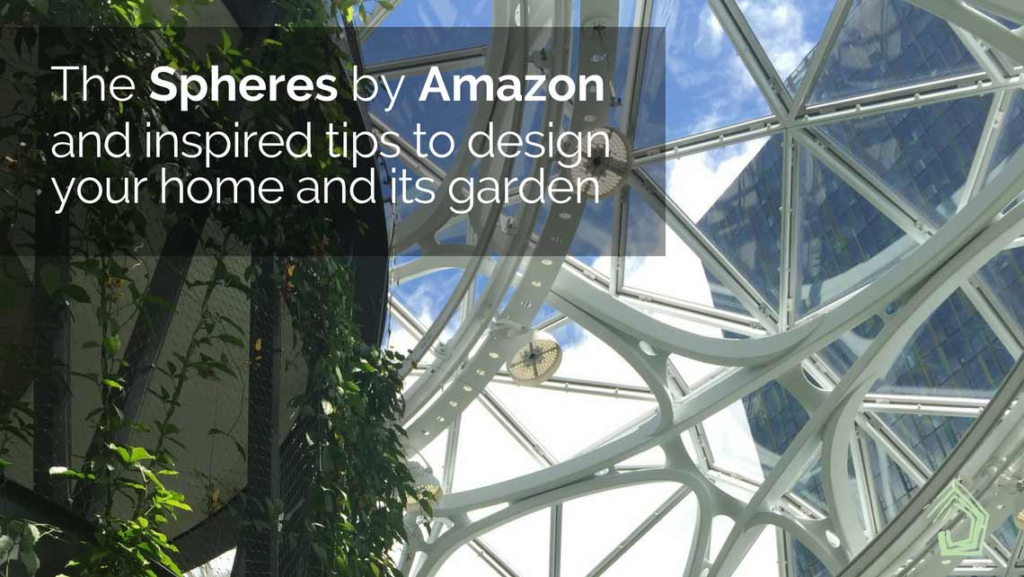
How can “The Spheres” by Amazon help you design your home and its garden?
This incredible facility, built by Amazon in order to connect its employees to nature, can help with your home and garden design. Here is more information …
I got to visit the Amazon Spheres, or “The Spheres” as they’re known, when I visited Seattle.
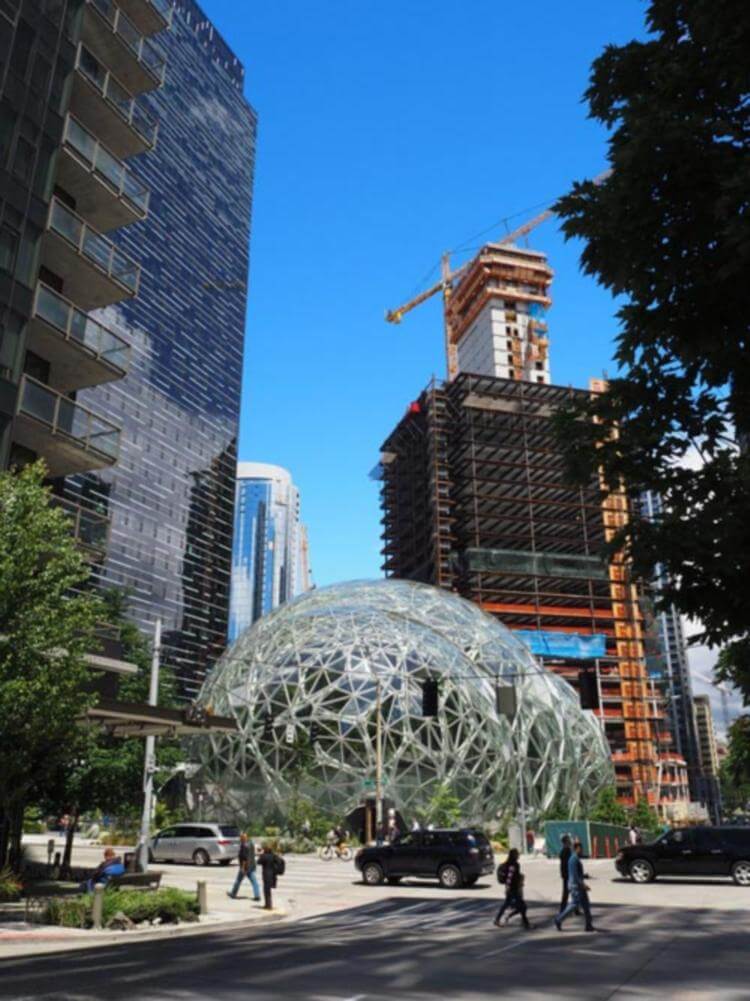
The view of The Spheres as we approached | Photograph by Amelia Lee, Undercover Architect
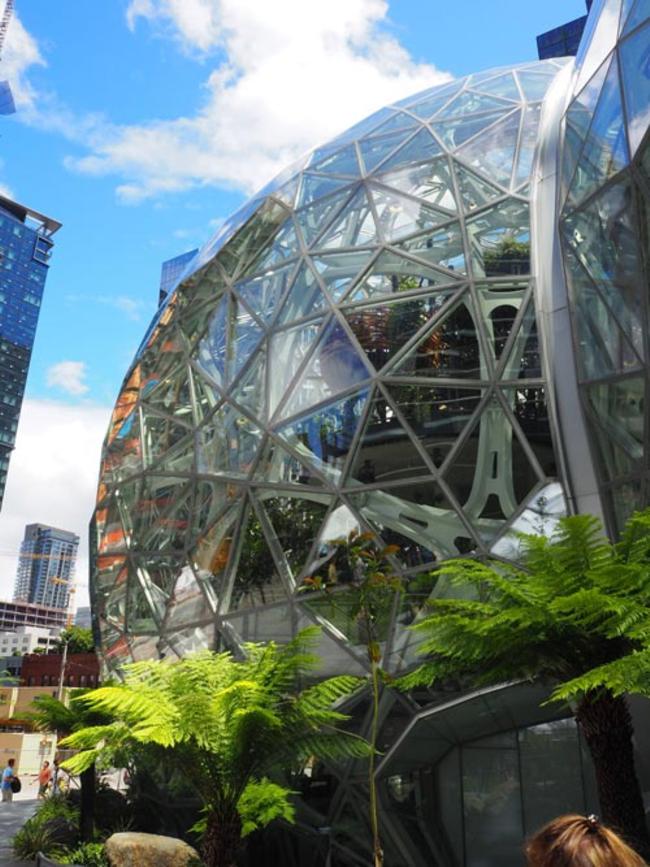
The exterior of The Spheres as we entered | Photograph by Amelia Lee, Undercover Architect
The Spheres were built in between February 2013 to January 2018. The building itself – which comprises of three glass domes, was completed in December 2016, and then from that time, up until the opening in January 2018, the garden inside the building was established.
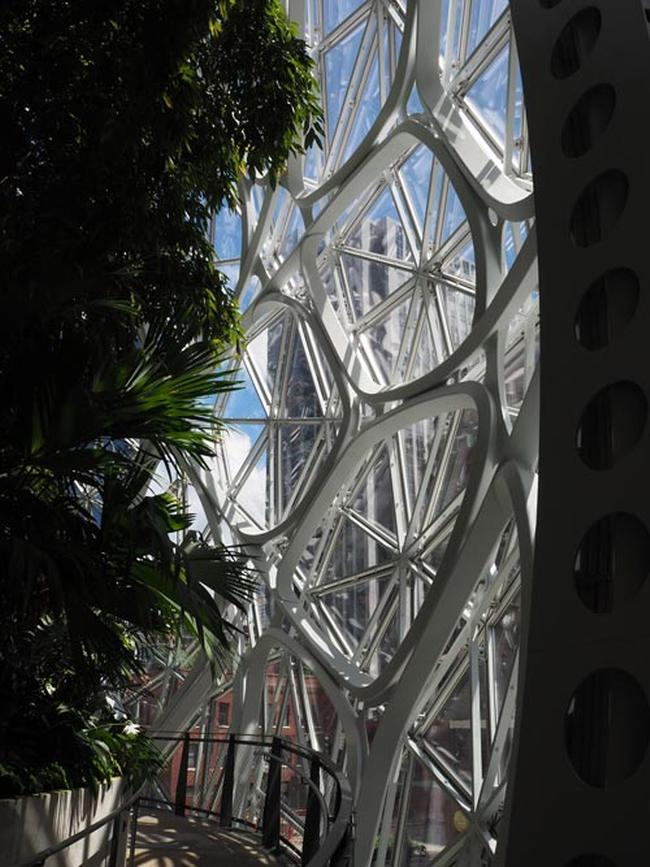
Other movements in The Spheres occurs around a central garden, and right up against the glass panelled dome wall | Photograph by Amelia Lee, Undercover Architect

The walkway under the highest part of the dome puts you right next to the glass panels | Photograph by Amelia Lee, Undercover Architect
This is pulled from the Sphere’s website …
The Spheres are a place where employees can think and work differently surrounded by plants.
The Spheres are a result of innovative thinking about the character of a workplace and an extended conversation about what is typically missing from urban offices– a direct link to nature. The Spheres are home to more than 40,000 plants from the cloud forest regions of over 30 countries.
Why am I mentioning this project? Well, I think there’s lots of inspiration that you can draw on when thinking about your home, and how you go about renovating or building it. And particularly, how you create the green spaces in and around it.
The importance of connection to nature in our everyday lives – and our homes
For both the High Line and The Spheres, it is super significant that landscape design, planting and green spaces are essential to the quality and feel of these structures and spaces.
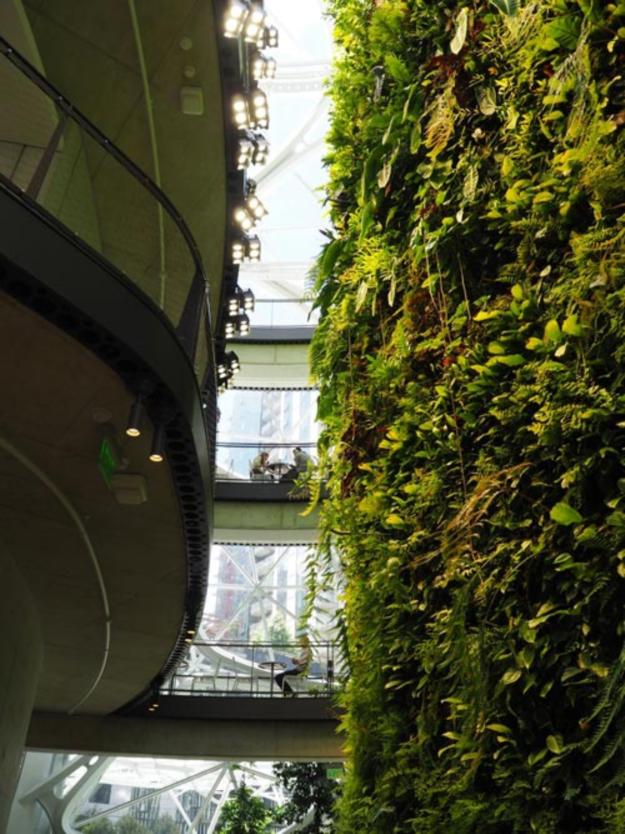
The vertical planted wall is dense and lush | Photograph by Amelia Lee, Undercover Architect
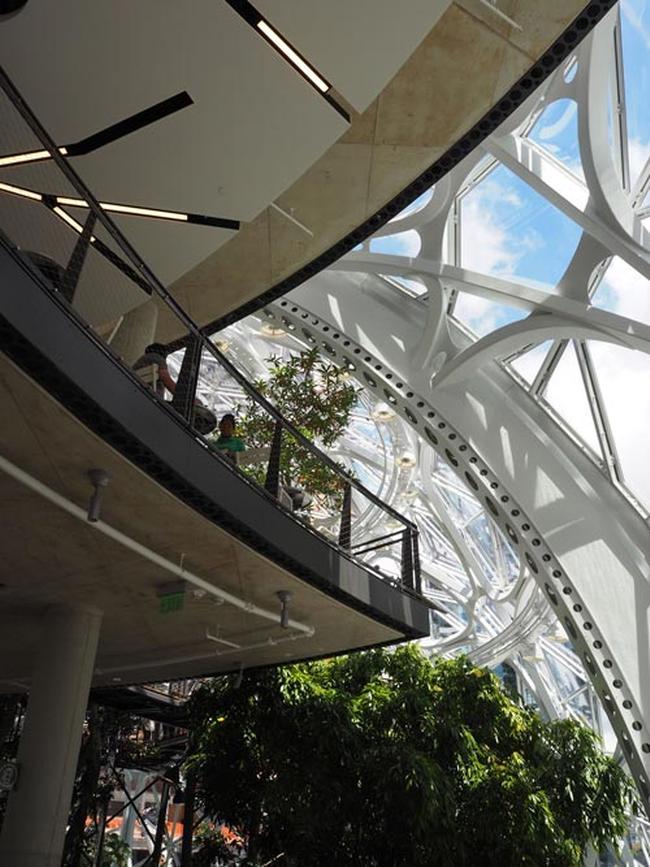
Platforms project out into the void, and overlook the garden areas | Photograph by Amelia Lee, Undercover Architect
The connection with gardens, with light, with natural elements … all of that is scientifically proven to improve our well-being, our sense of relaxation and lower our anxiety levels overall.
This is what your garden – no matter how big or how small, can offer your home. That feeling of relaxation, of slowness, of haven and enjoyment.
This doesn’t have to be grand statements. There are many examples of projects that have shown that something as simple as a lovingly curated collection of indoor plants can make a massive difference to the feel and function of a space in someone’s home. That can be achieved anywhere, for very little budget.
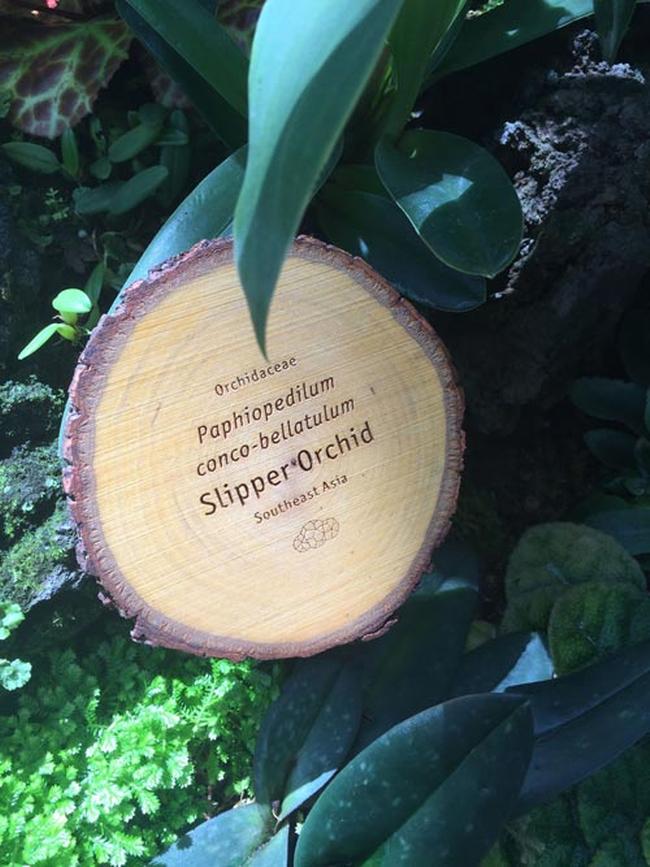
Each plant in The Spheres is identified with these fantastic timber signs | Photograph by Amelia Lee, Undercover Architect
So, let me tell you more about The Spheres, because it’s an amazing project.
I actually got access because the friend I was staying with used to work for Amazon. However, they do open the Spheres up to visitors a couple of times a month, so you can check out the Sphere’s website if you ever plan to be in Seattle and want to check them out.
Let me describe the experience to you if I can. As you approach The Spheres, winding your way through city streets, you see these glass domes that look unlike anything around them.
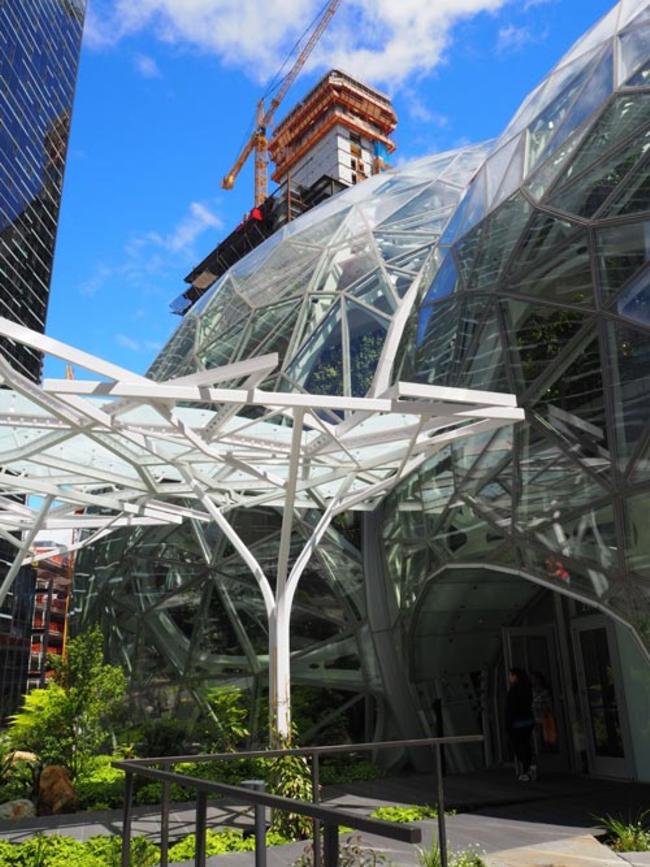
External structures defining walkways between The Spheres and other buildings look like tree canopies | Photograph by Amelia Lee, Undercover Architect

Amazon allows staff to bring their dogs to work, and provides an off-leash dog park outside | Photograph by Amelia Lee, Undercover Architect
They’re really notable, and as you get closer you can see the amount of greenery inside them, because they’re a fully transparent structure. In fact, they had to test the insides would get enough sunlight to support a tropical garden of that scale, as Seattle’s weather isn’t the most tropical or sunny.
So a mockup greenhouse was built to test glass types, temperatures and sunlight penetration, before they committed to the selections for The Spheres.
You enter at the bottom level, into quite a darkened space by comparison. There’s a security sign in, and as you move through turnstiles, you step into the full volume of the dome.
Up a winding staircase, along side a full height vertical garden, you start to see all the greenery revealed to you. The green wall extends up 65 feet – or approximately 22 metres, and the overall height of the domes at their tallest point is 90 feet – or approximately 30m. So, we’re talking a BIG space with a lot of greenery!
There’s several floors of cafes, meeting rooms, walk-ways and little gathering spaces.
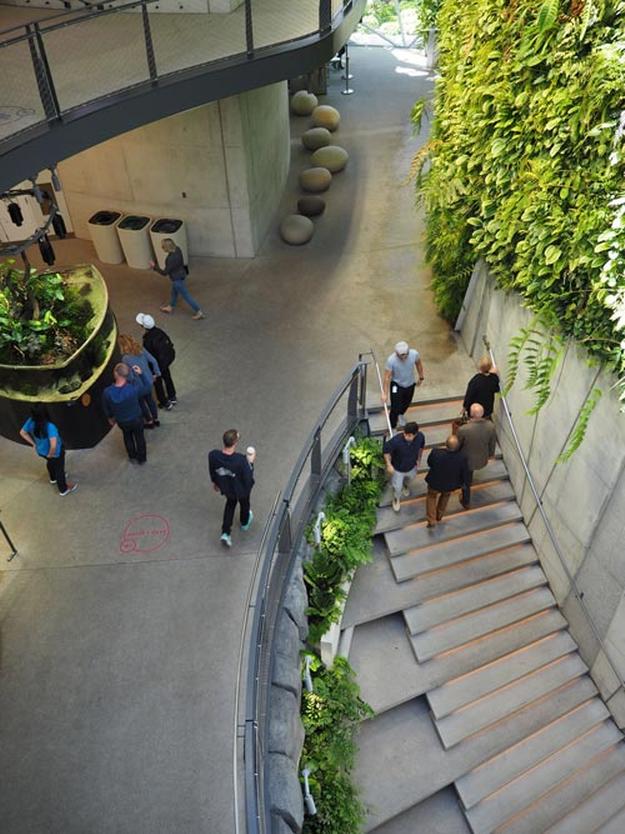
Looking down on the entry stair, where you arrive into The Spheres, adjacent to the vertical wall garden | Photograph by Amelia Lee, Undercover Architect
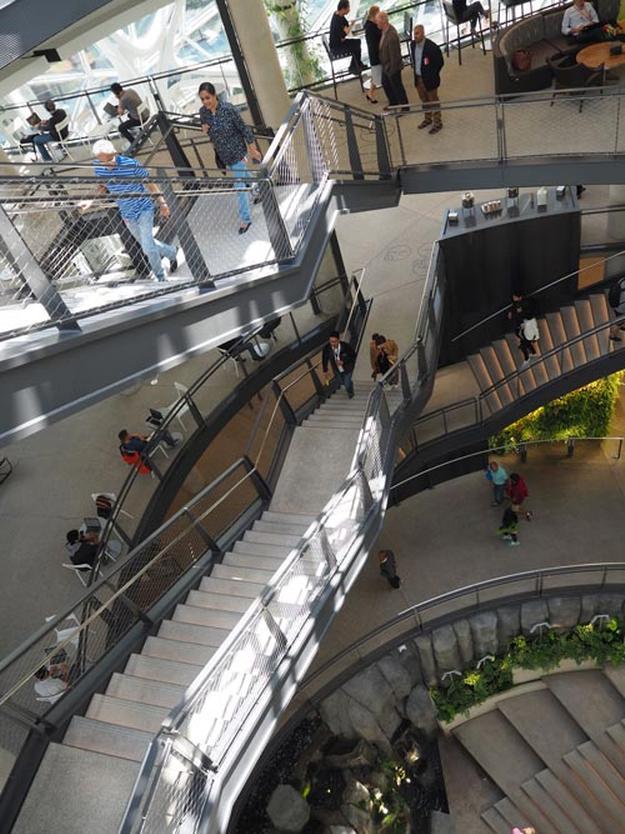
Looking down through the volume of The Spheres with its staircases and ramps | Photograph by Amelia Lee, Undercover Architect
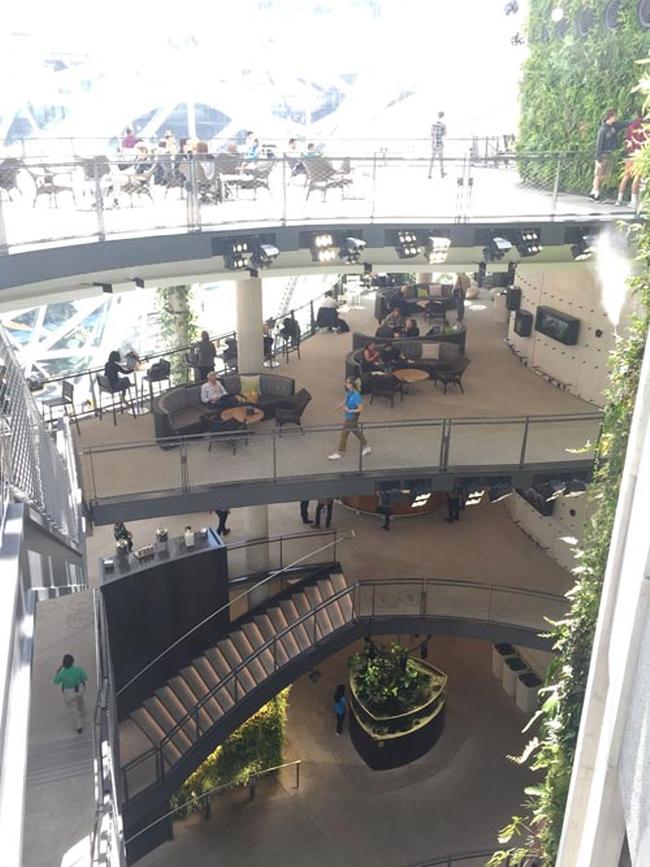
Different spaces are created at each level, with all movement oriented around garden areas | Photograph by Amelia Lee, Undercover Architect

The walkway and large trees on the uppermost level of The Spheres | Photograph by Amelia Lee, Undercover Architect
Everything seems to pivot around the greenery … you literally feel like you’re walking through a garden despite looking outside to city buildings. You can hear running water, and every so often a mist fires off to water the huge vertical garden wall nearby. And light … there is so much sunlight.
I didn’t know a lot about The Spheres before I visited, but surmised that Amazon had done a lot of research around how a connection with nature, and providing a space like this for staff to go, meet, work in, and be away for their desks, would enhance creativity and productivity overall … and impact company culture in a really positive way.
Since returning, I did some reading on the ‘why’ behind creating this space, and I found this great article – which I’ll pop a link to in the show notes, but wanted to read this section to you …
It was written in the Seattle Weekly by Kelton Sears in May 2016 – so about 7 months before it opened, but by this stage, all the plants were being installed and established. The article says …
“The Amazon Spheres are the latest local manifestation of a fascinating new design approach—biophilic and biomemetic architecture.
Kelton continues … Biophilia is the name of a seminal 1984 book by E.O. Wilson, a biologist with a specialty in ants. In Biophilia, Wilson posits the “biophilia hypothesis,” which states that, subconsciously, humans have evolved a deep connection with and affinity for natural systems and life forms (biophilia literally means “the love of life”).
In turn, the emerging field of biophilic design seeks to connect humanity with nature through the built environment. This can be as dramatic as cladding the entire exterior of a building with foliage or as simple as installing a small garden in the lobby. The approach has been most popular in hospitals, thanks to a scientific study that was able to quantify the medical benefits of biophilia. Patients recovering from surgery did so quicker and required less pain medication when they could see trees out their window than they did with a view of a brick wall.”
I think we actually understand this need for connection with the natural environment. That we feel better when we spend time in nature, and connect with it. I love thinking about how we do this in our homes, so they’re a really restorative place for us.
Throughout The Spheres, there were these gorgeous sitting areas that projected from the central stair and ramp at several places … including the Bird’s Nest. This was a semi-enclosed meeting area that projects out into the void of the dome, and literally does look a birds’ nest.
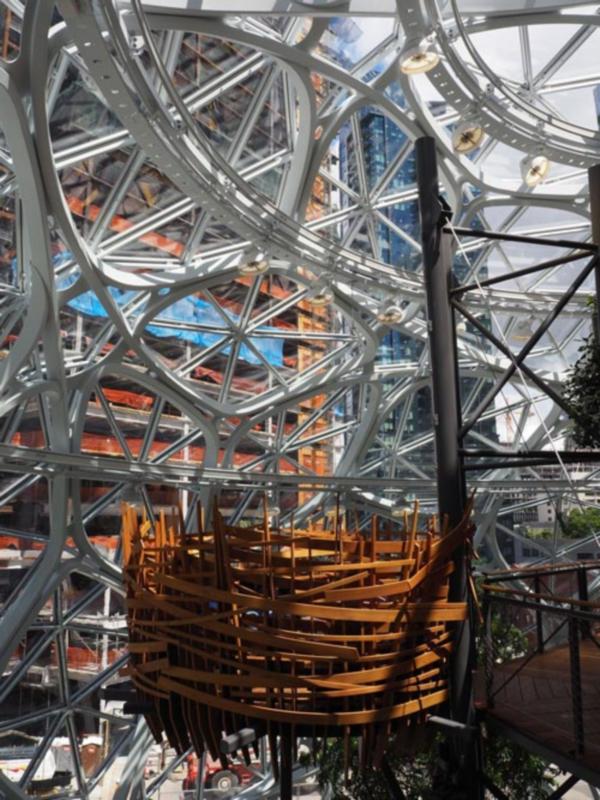
I think the Bird’s Nest was one of my favourite features | Photograph by Amelia Lee, Undercover Architect
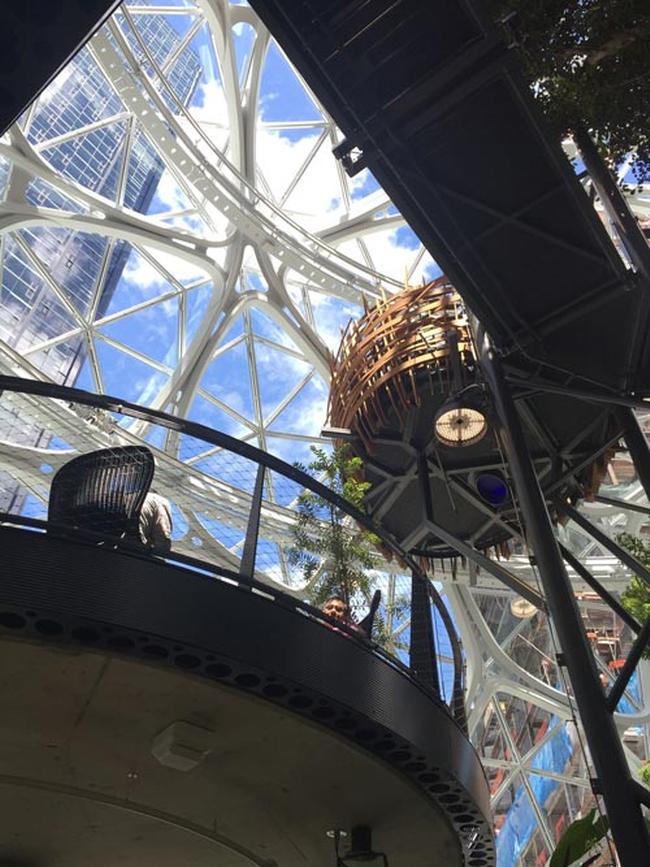
A view of the “Bird’s Nest” from below | Photograph by Amelia Lee, Undercover Architect
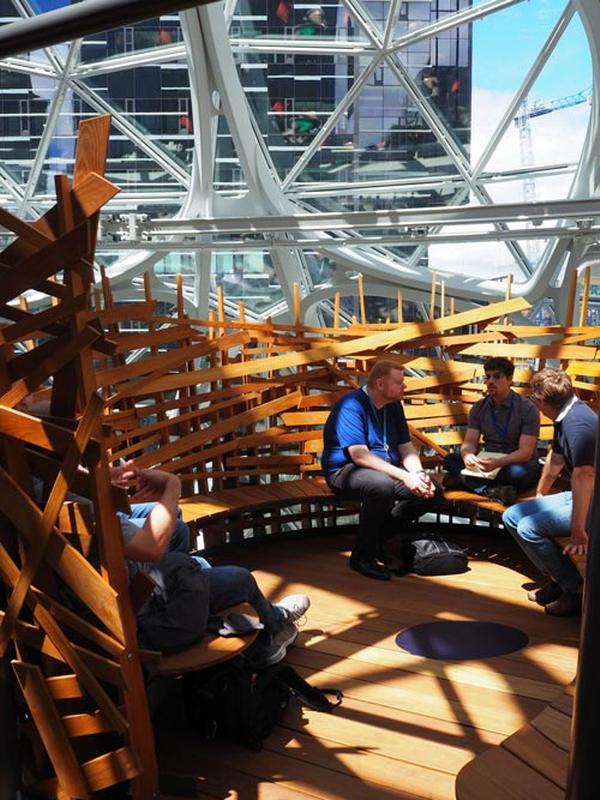
Looking inside the seating area of the Bird’s Nest | Photograph by Amelia Lee, Undercover Architect
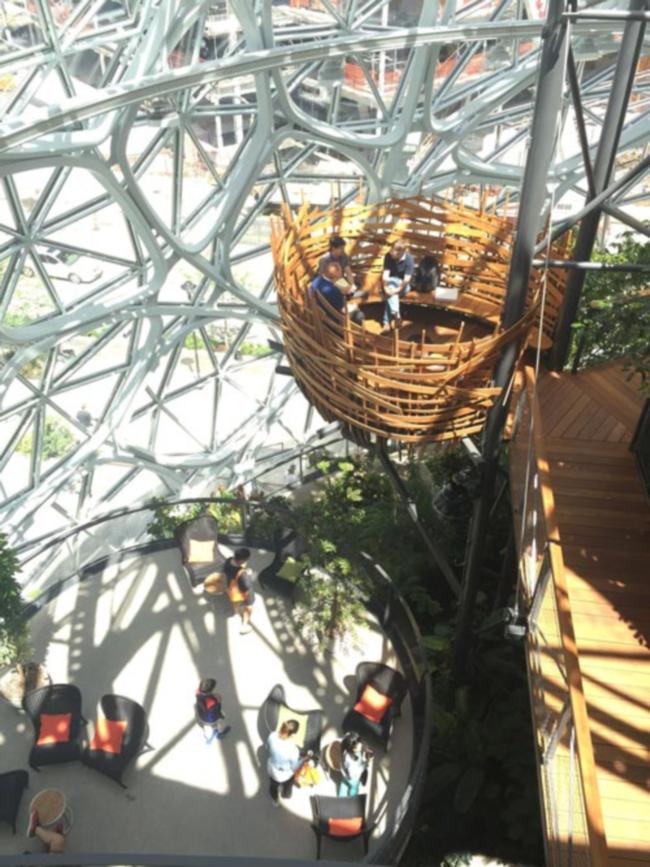
Looking down on the Bird’s Nest | Photograph by Amelia Lee, Undercover Architect
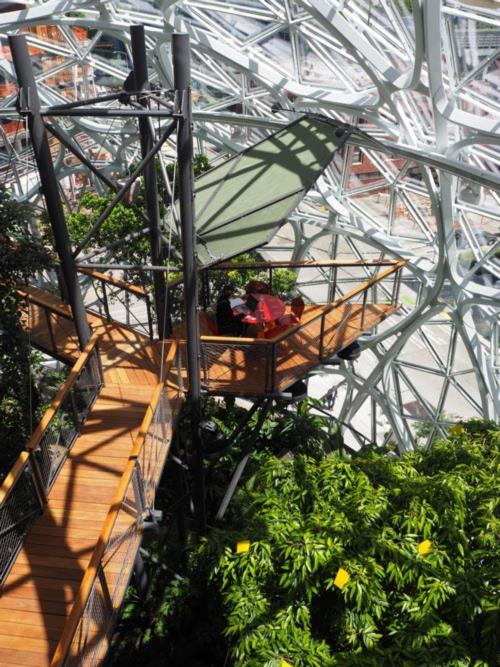
A small workspace with a canopy over the top that can be moved to shade the space as required | Photograph by Amelia Lee, Undercover Architect
There were smaller zones where you could sit at a desk and use your laptop, and adjust a panel above you for shade based on what the sun was doing (like the space in the image above). Everything felt very connected to the garden at every level.
How can your home do this too?
A couple of other things to be inspired by when it comes to The Spheres, and your new home or renovation …
One is the impact of volume.
I’ve spoken about this in more detail on another episode of the podcast (you can listen to it here). However, volume is a key way to create spaciousness in your home – without having to increase the floor plan of your home. Many homeowners think two-dimensionally about their design. They arrange boxes on a plan to get the rooms right … the correct size, connected the way they want … and then pop a flat ceiling over it all. Consider how volume can change how a space feels in size.
Another is the impact of natural light.
Again, I’ve dedicated several episodes to how important natural light is in helping you and your home feel great (you can start listening here). If you do want to include indoor plants, or even have a green space growing within your home, then getting the natural light right in your design will be essential. Design that in early, so you can maximise its potential.
There’s lots more I can mention … but if scroll through those photos above, I’m sure you can look for inspiration yourself.
It may seem weird that I’ve written about an urban park, and an Amazon staff facility, when this is a website all about designing, building or renovating your family home.
My hope is that it shows you that design inspiration is all around us.
When we get curious, and watch how we, and others, use and interact with spaces and places, it can give us great ideas for our homes.
It can help us see what we resonate with, what makes us feel great, what we do and don’t enjoy, and how we can make our homes fun, relaxing, enjoyable and beautiful places to live.
EXTRA RESOURCES FOR THE SPHERES, SEATTLE
The Spheres website >>> https://www.seattlespheres.com/
Article about Biophilic design and The Spheres >>> http://www.seattleweekly.com/news/using-nature-as-inspiration-architects-and-designers-are-building-seattles-biofuture/
Study on hospital patients from 1984 >>> https://www.healthdesign.org/chd/knowledge-repository/view-through-window-may-influence-recovery-surgery
 With over 30 years industry experience, Amelia Lee founded Undercover Architect in 2014 as an award-winning online resource to help and teach you how to get it right when designing, building or renovating your home. You are the key to unlocking what’s possible for your home. Undercover Architect is your secret ally
With over 30 years industry experience, Amelia Lee founded Undercover Architect in 2014 as an award-winning online resource to help and teach you how to get it right when designing, building or renovating your home. You are the key to unlocking what’s possible for your home. Undercover Architect is your secret ally
Leave a Reply